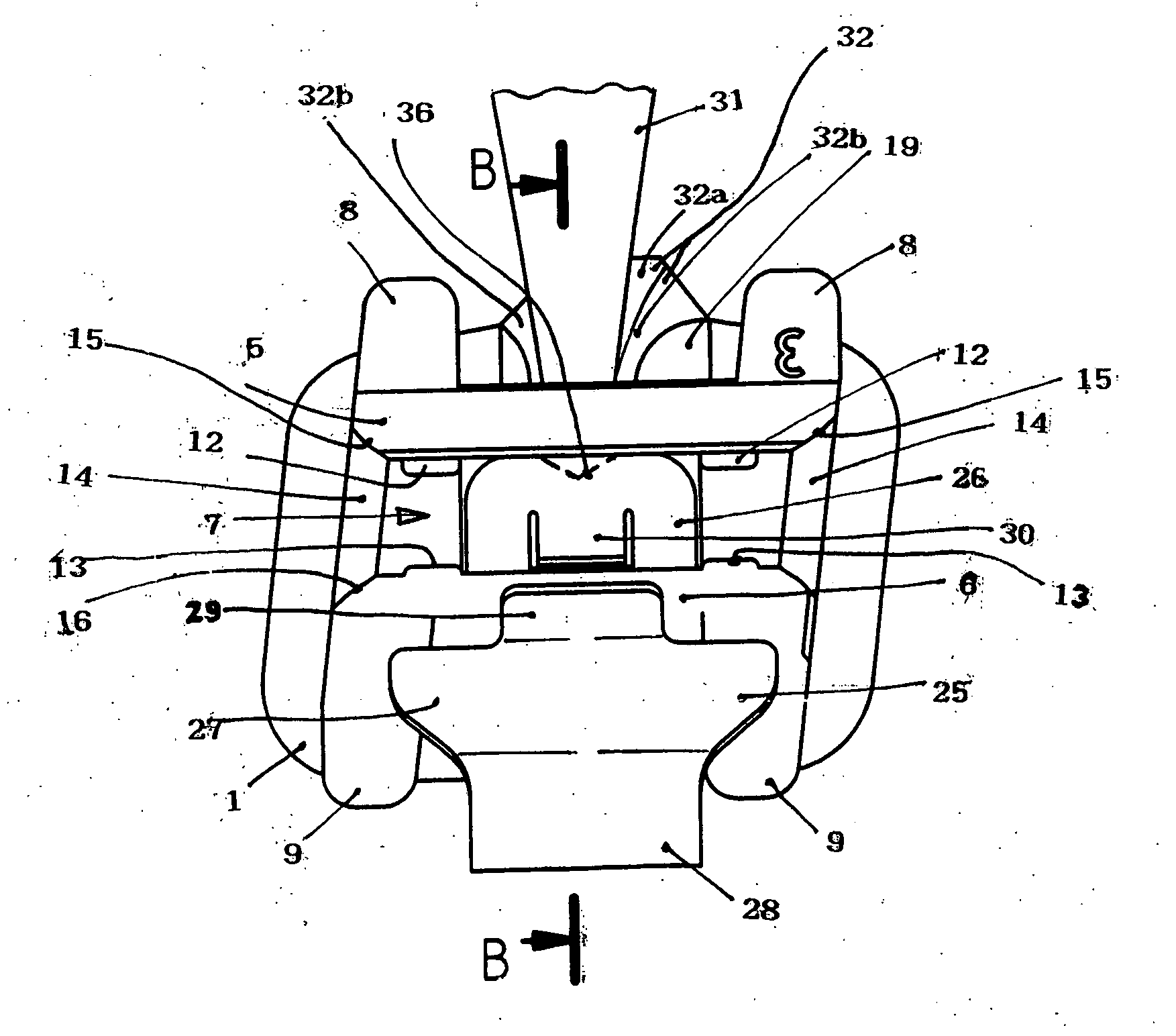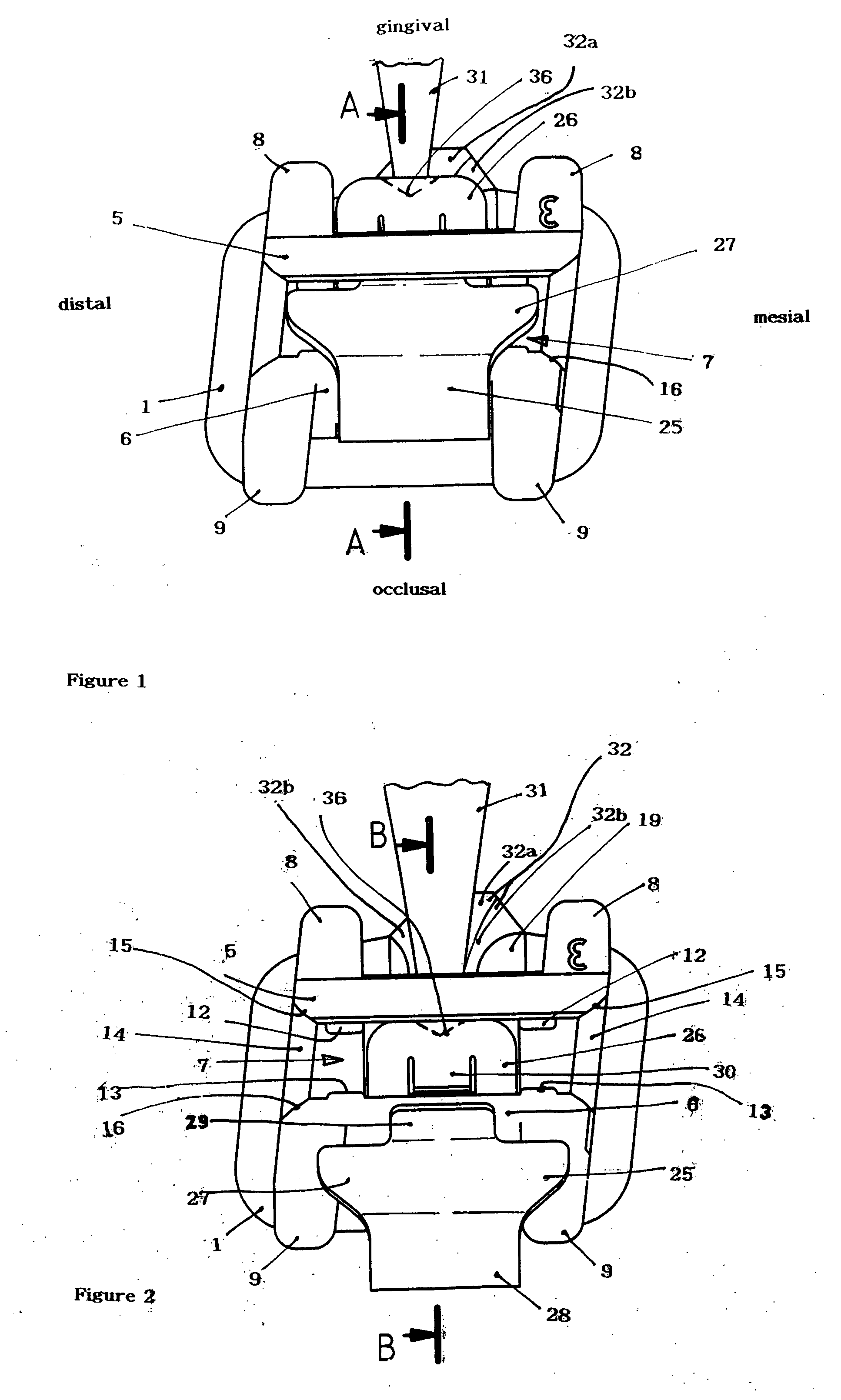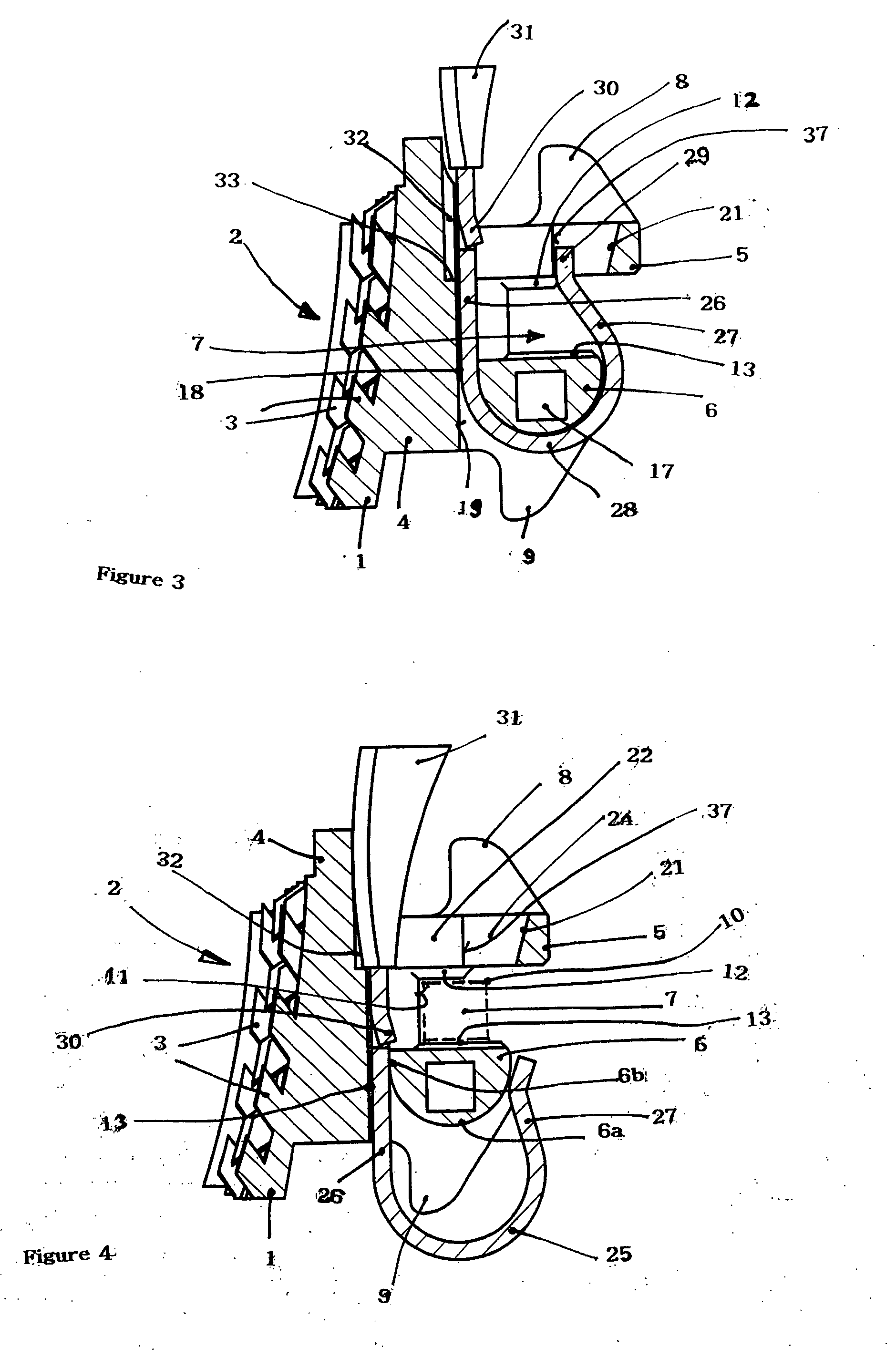Self-ligating bracket for use in orthodontics
a self-ligating bracket and orthodontic technology, applied in the field of self-ligating brackets for orthodontic use, can solve the problems of limiting the maximum dimension, weakening the clip, and inability to remedy disadvantages, etc., to facilitate the process of finding the groove, improve the wearing comfort in the mouth, and reduce the overall height of the brack
- Summary
- Abstract
- Description
- Claims
- Application Information
AI Technical Summary
Benefits of technology
Problems solved by technology
Method used
Image
Examples
Embodiment Construction
[0054] The bracket is provided with a curved base 1 the curvature of which is approximated to the front of a tooth. The bottom surface 2 of the base 1, which forms the lingual side of the bracket, is provided with undercut projections 3 arranged in series. The projections are rhomb-shaped in the cross-section shown in FIGS. 3 and 4, and are rectangular in a cross-section taken in parallel to the bottom surface 2. In order to glue the bracket onto a front of a tooth, an adhesive may be applied on the bottom surface 2. Due to the interleaving between the projections 3 and the adhesive good bonding strength is achieved. The projections 3 and, together with them, the undercuts are equally orientated in each row. Between the rows they are, however, alternately oriented in one and the other direction. This has the effect that when a force is applied on the bracket in the gingival-to-occlusal direction the same bonding strength will be achieved as in the case of a force acting in the occlu...
PUM
 Login to View More
Login to View More Abstract
Description
Claims
Application Information
 Login to View More
Login to View More - R&D
- Intellectual Property
- Life Sciences
- Materials
- Tech Scout
- Unparalleled Data Quality
- Higher Quality Content
- 60% Fewer Hallucinations
Browse by: Latest US Patents, China's latest patents, Technical Efficacy Thesaurus, Application Domain, Technology Topic, Popular Technical Reports.
© 2025 PatSnap. All rights reserved.Legal|Privacy policy|Modern Slavery Act Transparency Statement|Sitemap|About US| Contact US: help@patsnap.com



